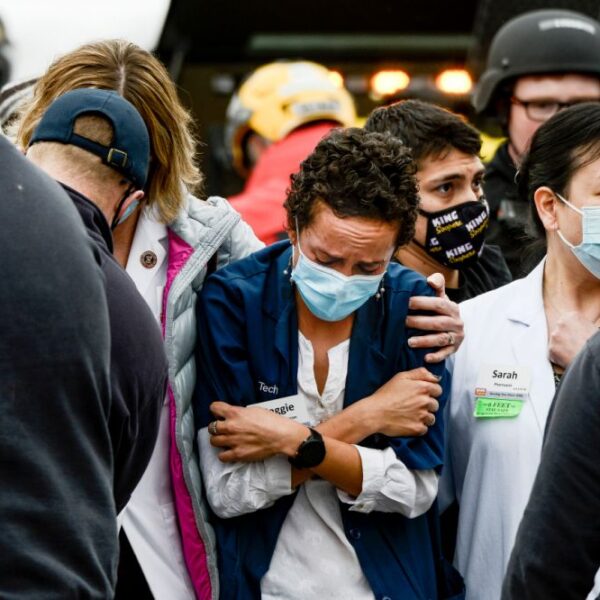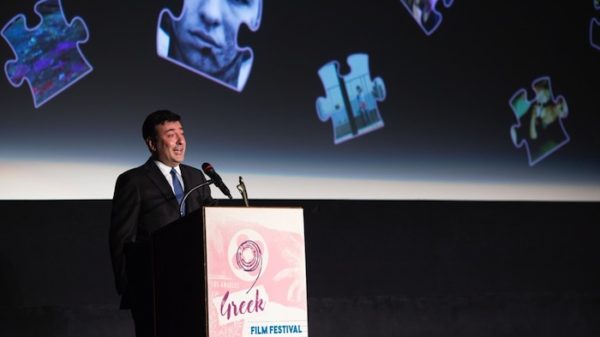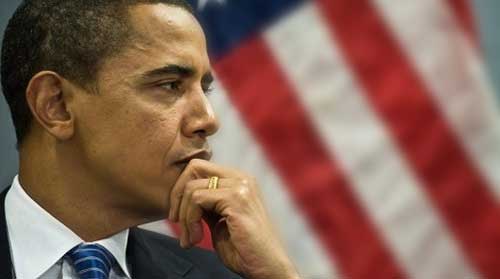Social historian Alixa Naff died Saturday, June 1 in Bowie, Maryland. She was ninety-three.
Alixa Naff, considered “the mother” of Arab American Studies, established the Faris and Yamna Naff Arab American Collection at the Smithsonian Institution in Washington, D.C. In the summer of 1962, she travelled the United States in a blue Volkswagon beetle, known as “the camel,” conducting oral interviews with the first generations of Arab American immigrants and collecting their photographs and artifacts. This growing collection, donated to the Smithsonian in 1984 but maintained and supplemented by Naff for years afterward, offers an invaluable resource for those attempting to understand and communicate Arab American history.

Alixa Naff with dignitaries: L-R Rinzler, Alexa, Ahlboun, Kennedy
1st floor National Museums of American History, Smithsonian Institution,
on the occasion of her donating the Naff Arab American Collection
Naff was born September 15, 1919 in Rashayya al-Wadi, a village in the Anti-Lebanon, the western mountain range of the former Syrian province in what today is Lebanon. Her parents Faris and Yamna Naff immigrated to the United States in 1921 and arrived in Spring Valley, Illinois on January 1, 1922 (where a substantial group of families from Rashayya had also settled). Faris was familiar with the town because of a previous episode as a peddler in the United States from 1895 to 1913. He returned to peddling through the Midwest during the 1920s using Spring Valley as a base.
Naff recalled how during her childhood in Spring Valley her parents would encourage her to attend American Protestant churches, in addition to their own St. George’s Syrian Orthodox Church, in order to learn English. Political turmoil in the Levant still stressed her family in the United States: her grandparents on her mother’s side were murdered in 1925 during internal conflict between Druze and Christian sects in Lebanon.
In 1929, the family moved to Fort Wayne, Indiana to open a grocery store, which failed in less than a year. Yet, only a few months into this endeavor, Alixa had been sent away to live with a family member in Detroit, and there she developed a habit for clipping papers and for collecting various writings, pictures, and other intriguing objects. In June 1931, her father brought the full family to Detroit, where he launched a series of challenging stabs at the grocery business.
Naff wrote how her eclectic habits of “daydreaming and reading” led her to diverge from expectations for Syrian women in America, and she developed a special interest in English literature in school. In an essay in the Arab Detroit collection published in 2000, Naff described her life in Detroit during the Great Depression and the family’s home at 57 Tennyson Avenue in Highland Park, Michigan, which they moved into in 1942.
Naff worked for Western Union for several years in Detroit, and she credited this experience for broadening her horizons for independent career options, but she was forced to shift back to managing the family grocery store during World War II as her brothers were involved in the war effort.

Alixa Naff and her assistants organizing the data she brought back from the field, August 1980.
L-Right- Rick Coury, Alixa, Omar Bourouh, Belgasim? Omar, Belgasim were graduate students at American University, DC from Algeria.
Her brothers did not wish to return to Detroit to continue the family grocery business, and, sadly, her mother died rather suddenly and quite young in April 1949. Alixa instigated the selling of the family grocery, and she and her father moved to California in 1950. She encouraged her father, Faris, to process his mourning by writing his life story in Arabic in a brown spiral-bound notebook. This artifact is a treasured piece in the Naff collection, and as Naff improved her Arabic later on she eventually translated it into English. It begins: “My father died in 1872 and left my mother with nothing.”
After a decade of business administration work in the private sector, Naff enrolled at the University of California, Los Angeles to obtain a B.A. degree in the late 1950s. During her senior year, she was required to write a paper for an American history seminar on immigration, and she chose the subject of the Arabs in America. She recalled that, because of the lack of scholarship, the paper was largely “based on conversations with my parents’ friends, because there was little on library shelves.” This difficult experience intrigued her professor, who facilitated a grant for her to collect Arab oral histories and folklore.
During the summer of 1962, with $1,000, her tape recorder (now housed at the Arab American National Museum in Dearborn, Michigan), and her blue Volkswagen beetle, Naff visited sixteen communities with Arab immigrants in the United States and eastern Canada, and interviewed eighty-seven people, the last surviving members of the “pioneer” generation. In an 1985 article, Naff told how during this “summer of discovery” she, “in mining their minds for folklore, … discovered the mother lode of Arab life histories, a record of the vitality of their ethnic life in America.” She said, “Their experiences and their delight in relating them … fascinated and captivated me.”
During this trip, she began to collect other objects that would eventually anchor the Naff collection at the Smithsonian. “These people would give me artifacts, newspapers or pictures which I kept without fully appreciating their real value.”
After completing her fieldwork, Naff persisted to earn a master’s and a Ph.D. degree in 1972, writing her dissertation on “The Social History of Zahle, the Principal Market Town in Nineteenth-Century Lebanon.” Naff then taught at the college level at California State University, Chico, and the University of Colorado at Boulder. However, in 1977, she left academic teaching at a time when “anti-Arab feeling was at a pitch” and decided to initiate a more active role in collecting Arab American materials and having a national impact on countering anti-Arab stereotypes with accurate information. She recalled messaging The Washington Post, The New York Times, and various members of Congress with the question: “Where are you getting your information about Arab Americans?”
Naff also wrote about how the 1967 war between the Arabs and Israelis affected the development of her identity. “I was in my office when I first heard about the war,” she said. “A friend came in and said ‘Alixa, you better go home, they’re out to get you’. I didn’t understand. At that time, I ate the [Arab] food and I loved the dancing, but I was an American. All of a sudden, we all became Arabs.”
In 1977, Naff moved to Washington, D.C. to work as a consultant on a documentary film about the Arab experience in the United States, and this project only further emphasized the lack of basic material. Naff sometimes blamed Arab immigrants themselves, who “neglected to study themselves.” She worried they saw “[t]he history of their American experience [as] too insignificant and too fleeting to warrant recording.” Aware from her earlier travels that family members often threw away papers, artifacts, and photographs, Naff began to bolster her collection while initiating a full study on the history of Arab immigrants.
In 1979, Alixa Naff met Gino Baroni, an undersecretary at the United States Department of Housing and Urban Development and the founder of the National Center for Urban Ethnic Affairs. His center facilitated grants for her work from the National Endowment for the Humanities and gave her an office. This period nurtured her book Becoming American: The Early Arab Immigrant Experience, which was published by Southern Illinois University Press in 1985. Simultaneously, Richard Ahlborn, curator of the Smithsonian’s Community Life Division, persuaded Naff to donate her growing collection of materials to the Smithsonian. She named the collection after her parents Faris and Yamna Naff, and it was inaugurated with a ceremonial event in 1984.
Naff required that her gift had explicit conditions: that the collection would be preserved, expanded, made available to students and scholars, and exhibited periodically to the public. However, Naff soon realized that much of this work would require her own hand, and so for decades Naff became a volunteer archivist of her own collection, a constant and colorful presence at the Smithsonian. She was also helped by an array of volunteers who helped her with assorted tasks. Naff frequently travelled the country to give lectures about the collection and her work, persistently and energetically attempting to gain artifacts when opportunities arose.
The collection, currently housed at the Smithsonian’s National Museum of American History, is quite large: 500 artifacts (including instruments and music recordings) and at least 120 cubic feet of documents, including 450 oral history interviews (which focus especially on the sociology of assimilation) and more than 2,000 photos. The tapes have been largely transcribed (although she hoped for their eventually digitization). Naff also collected a wide variety of articles, newspapers, dissertations, and books, including on important contemporary topics such as discrimination against Arab Americans and on the historical roles of Arab American women. Other popular document sets in the collection include the papers of Sana and Amer Kadash, well-known singers of the 1940s and 1950s, and those of the Damour family of Norfolk, Virginia, who are famous for inventing the ice cream cone.
Naff’s greatest hope was that her that her collection would be used by a new generation of researchers and that “someone will come along and use this and write the next chapter.” Naff joked that the opening of her collection in 1984 was “more important than her funeral,” and she was quite pleased when volunteers would occasionally help with the project, stating that “I have to start believing in miracles.” Hani Bawardi, professor at University of Michigan in Dearborn, believes that the Naff collection is now starting to have its full effect, arguing that, “I believe the body of material Naff secured will make it possible to rethink major assumptions about the lives of the Syrian and Lebanese pioneers in this country.”
“For Arab Americans who have struggled to balance an uncertain ethnic identity with great pride as Americans,” writes her nephew Clayton, the Naff collection “holds a powerful lot of dignity.”
Naff is survived by her brothers Tom and George and numerous nieces and nephews. Memorial gifts can be sent to the Smithsonian.









